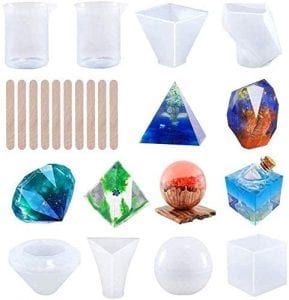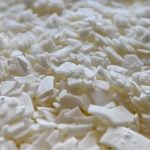Candle making is a beloved hobby that allows individuals to express their creativity and craft beautiful, personalized pieces. Whether you’re a seasoned candle maker or just starting out, understanding the basics of making candles and trimming the wicks is essential for creating high-quality products. In this beginner’s guide, we’ll take you through the process of making your own candles from selecting the right wax to choosing the perfect fragrance and mastering the art of wick trimming.
When it comes to candle making, one of the key elements to ensure a successful burn is trimming your wicks properly. Trimming the wick helps prevent tunneling, uneven burning, and excessive smoke. It is crucial in maintaining a clean and efficient burn for your candles. Understanding how to trim your wicks effectively can make a significant difference in the overall performance and longevity of your creations.
In this comprehensive guide, we will explore everything you need to know about making candles as a beginner. From selecting the right wax and fragrance to learning essential tools and materials, we will provide you with step-by-step instructions on creating your own candles.
Additionally, we will delve into the importance of trimming your candle wicks and offer valuable tips and tricks on how to do so properly for optimal results. Let’s dive into the world of candle making and discover the joy of crafting beautiful, aromatic candles while mastering proper wick-trimming techniques along the way.
Choosing the Right Wax for Your Candle
When it comes to making candles, one of the most crucial decisions is choosing the right wax. The type of wax you use will greatly affect the appearance, burn time, and scent throw of your candle. There are several options available in the market, each with its own set of advantages and considerations.
Paraffin Wax
Paraffin wax is a popular choice among candle makers due to its affordability and ease of use. It has a good scent throw and can hold color well. However, paraffin wax is derived from petroleum, which may not be appealing to those looking for more natural options.
Soy Wax
Soy wax is a renewable resource made from soybean oil, making it a more environmentally friendly choice. It has a clean burn, minimal soot, and excellent scent throw. Soy wax can also hold fragrance oils well, making it ideal for scented candles.
Beeswax
Beeswax is another natural option that offers a subtle honey-like scent and beautiful golden hue. It burns cleanly and slowly, producing a warm glow. Beeswax can be more expensive than other waxes but is worth it for those seeking a high-quality, natural candle.
When considering which wax to use for your candle making project, take into account factors such as cost, burn time, scent throw, and personal preferences. Experimenting with different waxes can help you find the perfect fit for your candle making needs while keeping in mind the importance of trimming your wicks regularly for optimal performance.
Selecting the Perfect Fragrance for Your Candle
When it comes to making candles, selecting the perfect fragrance is a crucial step in creating a delightful sensory experience. The aroma of a candle can evoke memories, enhance relaxation, or set the mood in any space. With so many options available, from floral scents to warm and cozy aromas, choosing the right fragrance for your candle can make all the difference in the final product.
To help you navigate through the wide array of fragrances available for candle making, consider the following tips:
- Consider the purpose of the candle: Are you looking to create a calming atmosphere for relaxation or a refreshing scent for energizing your space? Different fragrances can have varying effects on mood and ambiance.
- Think about the season: Scents like pumpkin spice or cinnamon are perfect for fall and winter, while citrusy or floral fragrances are ideal for spring and summer. Matching your candle’s fragrance with the season can enhance its overall appeal.
- Test different combinations: Don’t be afraid to experiment with blending different essential oils or fragrance oils to create unique scents. Mixing complementary aromas can result in a custom fragrance that suits your preferences perfectly.
Remember that selecting the perfect fragrance is a personal choice, so trust your instincts and choose what resonates with you most. Whether you prefer sweet vanilla, earthy cedarwood, or fresh linen scents, finding the right fragrance will elevate your candle-making experience and delight your senses every time you light up your creation.
Properly trimming wicks is vital in ensuring that your candles burn evenly and efficiently maintain their scent throw. By trimming wicks regularly before each use, you prevent uneven burning, smoking, and mushrooming of the wick. Follow these tips for trimming wicks properly:
- Use sharp scissors or a wick trimmer specifically designed for candles to trim wicks to 1/4 inch before lighting each time.
- Avoid cutting wicks too short as this could drown them during burning and prevent them from relighting properly.
- Remove any excess debris or charred wick remnants from the wax pool before relighting to maintain optimal burning conditions.
Essential Tools and Materials for Candle Making
When it comes to making candles and trimming the wicks, having the right tools and materials is essential for a successful and enjoyable crafting experience. Before diving into the process of creating your own candles, it is important to gather all necessary supplies to ensure a smooth workflow. Here are some essential tools and materials you will need for candle making:
- Wax: The foundation of any candle, choosing the right wax is crucial for the quality and performance of your finished product. Some popular options include soy wax, beeswax, and paraffin wax.
- Fragrance Oils: Adding fragrance to your candles can enhance the ambiance and create a sensory experience. Choose from a wide variety of scents such as floral, fruity, or seasonal options.
- Wicks: The wick is what allows the candle to burn, so selecting the appropriate size and type is important. Wicks come in different materials like cotton or wood, and various sizes depending on the diameter of your container.
- Containers: Whether you prefer glass jars, metal tins, or silicone molds, choosing the right container for your candles can impact their appearance and burning efficiency.
- Colorants: If you want to add color to your candles, there are different types of dyes and pigments available in liquid or chip form. Experiment with different shades to achieve your desired look.
In addition to these basic supplies, there are some handy tools that can make the candle-making process easier and more efficient. Here are some essential tools that every candle maker should have in their arsenal:
- Double Boiler or Melting Pot: An essential tool for melting wax safely without direct heat contact. This helps prevent overheating and ensures a smooth consistency.
- Thermometer: Monitoring the temperature of your melted wax is crucial for achieving optimal pouring conditions. A candy or digital thermometer can help you maintain consistency.
- Stirring Utensil: A dedicated stirring utensil like a wooden spoon or stainless steel whisk is needed to mix in fragrance oils, colorants, or additives evenly into the melted wax.
- Pouring Pitcher: This spouted container makes pouring hot wax into molds much easier and cleaner. Look for one with a handle for better control during pouring.
- Wick Trimmer: Once your candles are set and ready to burn, using a wick trimmer will help maintain proper wick length for optimal burning performance.
By having these essential tools and materials on hand before starting your candle-making journey, you can create beautiful hand-poured creations with ease while ensuring proper wick trimming techniques are also utilized throughout the process.
Step-by-Step Guide to Making Your Own Candles
Candle making can be a fun and rewarding activity that allows you to create personalized candles for yourself or as gifts for loved ones. Before you begin the candle making process, it’s important to gather all the necessary tools and materials. Some essential items you will need include wax, fragrance oils, wicks, a double boiler, a thermometer, and a container for the candle.
The first step in making candles is to choose the right wax for your project. There are different types of waxes available, such as soy wax, beeswax, and paraffin wax. Each type of wax has its own unique characteristics and melting points, so it’s important to select the one that best suits your needs. Soy wax is a popular choice for beginners due to its easy availability and clean-burning properties.
Once you have selected your wax, you can move on to adding fragrance oils to create scented candles. Choose a fragrance that complements the season or ambiance you want to create with your candle. It’s essential to follow the manufacturer’s guidelines when adding fragrance oils to ensure that your candle will have an optimal scent throw when lit.
After pouring the scented wax into your container and placing the wick in the center, allow it to cool and solidify before trimming the wick to an appropriate length for optimal burning. Remember that trimming the wick is crucial for maintaining a clean burn and preventing soot buildup in your candles.
| Essential Tools | Materials |
|---|---|
| Double Boiler | Wax |
| Thermometer | Fragrance Oils |
| Container | Wicks |
The Importance of Trimming Your Candle Wicks
Candle wicks play a crucial role in the burning process of candles, making it essential to understand the importance of trimming them. When you light a candle with an untrimmed wick, it can lead to issues such as excessive flickering, soot buildup, and uneven burning.
Trimming the wick helps to control the size of the flame, which in turn affects how efficiently the candle burns. By regularly trimming your candle wicks to the appropriate length, you can ensure a cleaner and longer-lasting burn.
One key reason why trimming your candle wicks is important is to prevent potential hazards. A wick that is too long can cause a larger flame than necessary, increasing the risk of accidental fires or even damaging the container holding the candle.
Keeping the wick trimmed to around 1/4 inch before each use reduces these risks significantly. Additionally, a properly trimmed wick results in less smoke and soot being produced during burning, creating a healthier environment for you and protecting your candles from unsightly black residue.
To maintain the quality of your candles and optimize their performance, it is recommended to trim the wick before lighting them each time. As part of your candle care routine, use sharp scissors or a specialized wick trimmer to cut off any excess length from the wick.
This simple step not only promotes safety but also ensures that your candles burn cleanly and evenly, allowing you to enjoy their fragrance and ambiance to the fullest. Remember that by incorporating proper wick trimming into your candle making practice, you are not only enhancing the overall aesthetics but also prolonging their lifespan for more hours of aromatic delight.
| Importance of Trimming Candle Wicks | Benefits |
|---|---|
| Prevents hazards and potential fires | Reduces risks and maintains safety |
| Minimizes smoke and soot production | Creates a cleaner burning environment |
| Optimizes candle performance | Prolongs lifespan and enhances fragrance enjoyment |
Tips and Tricks for Trimming Wicks Properly
Why Trimming Your Wick Is Important
Trimming the wicks of your candles is a crucial step in ensuring that your candles burn cleanly and efficiently. When a wick is too long, it can create a larger, flickering flame that may cause soot to form on the container or glass holding the candle.
This soot not only looks unsightly but can also affect the fragrance throw of your candle. By regularly trimming your wicks to the recommended length, usually around 1/4 inch, you can prevent these issues and enjoy a longer-lasting, better-performing candle.
Tools for Trimming Wicks
To trim your candle wicks effectively, you will need the right tools. A pair of sharp scissors or wick trimmers specifically designed for candle making are essential for achieving a clean cut without causing any fraying or unraveling of the wick. Wick trimmers are especially convenient as they often come with a built-in debris catching tray to easily dispose of the trimmed wick.
Best Practices for Trimming Wicks
When it comes to trimming your candle wicks, there are some best practices to keep in mind. It’s recommended to trim the wick before lighting each time to ensure an even burn and reduce smoking.
Additionally, always make sure to remove any debris or trimmed wick pieces from the wax pool before lighting the candle to avoid potential hazards. By following these tips and tricks for trimming wicks properly, you can enhance the performance and longevity of your handmade candles while also maintaining a safe burning environment.
Remember: Properly trimming your wicks is not just about aesthetics; it plays a significant role in optimizing the overall candle making experience and ensuring that you get the most out of each burn.
Troubleshooting Common Candle Making Issues
When it comes to making candles and trimming the wicks, there can be some common issues that arise during the process. One of the most frequent problems that candle makers encounter is tunneling. Tunneling occurs when a candle burns straight down the center, leaving wax along the sides untouched.
This can happen if the candle was not burned for long enough during previous uses or if the wick is too small for the size of the candle. To remedy this issue, it is important to burn your candle for a few hours each time to allow the wax to melt evenly across the entire surface.
Another common problem that candle makers face is frosting. Frosting appears as a white, powdery layer on the surface of a candle and can occur due to various factors such as rapid cooling or using low-quality waxes. To prevent frosting, try pouring your wax at a slightly higher temperature and avoiding sudden changes in temperature during the cooling process. Additionally, using high-quality waxes and dyes can help minimize frosting issues in your candles.
Lastly, air bubbles can also be a pesky problem when making candles. Air bubbles form when hot wax is poured too quickly or stirred too vigorously during the mixing process. To avoid air bubbles, try pouring your wax slowly and gently stirring to ensure that no air gets trapped in the mixture.
Additionally, tapping your mold lightly on a flat surface after pouring can help release any remaining air bubbles before the wax sets completely. By addressing these common candle making issues proactively, you can create beautiful candles with smooth surfaces and clean burns every time.
Enhancing Your Candle Making Skills
Once you have mastered the basics of making candles and trimming the wicks, you may find yourself wanting to expand your skills and creativity in this craft. There are several advanced techniques and ideas that can take your candle-making endeavors to the next level. One advanced technique that you can explore is creating layered candles. This involves pouring different colored or scented layers of wax one at a time to create a visually stunning candle.
Another advanced technique to consider is using embeds in your candles. Embeds are small objects or shapes that are placed within the candle as it is being made. This can add a unique touch to your candles, such as incorporating dried flowers, seashells, or even small decorative items into your candle designs. Just be sure that any embeds used are non-flammable and will not interfere with the burning quality of the candle.
Additionally, experimenting with different types of wax blends can also help enhance your candle-making skills. Soy wax, beeswax, paraffin wax, and coconut wax all have unique properties that can affect the scent throw, burn time, and overall quality of your candles.
By trying out different wax blends and ratios, you can customize your candles to achieve the desired look and performance. Remember to always test new blends before mass-producing them to ensure they meet your standards for quality and safety.
Conclusion
In conclusion, making candles and trimming the wicks can truly be a rewarding and fulfilling hobby. Not only do you get to unleash your creativity by choosing the perfect wax, fragrance, and design for your candles, but you also have the satisfaction of creating something beautiful and functional with your own hands. The process of candle making can be therapeutic and calming, allowing you to unwind and relax as you immerse yourself in this craft.
Properly trimming the wicks of your candles is essential for not only ensuring a clean burn but also for prolonging the life of your candles. By regularly trimming the wicks to the recommended length before each use, you can avoid issues such as excessive smoking, tunneling, and uneven burning. This simple step may seem minor, but it plays a significant role in maintaining the quality and longevity of your homemade candles.
As you continue to explore the world of candle making and hone your skills in crafting beautiful candles, remember to always prioritize safety. Use quality materials, follow instructions carefully, and never leave burning candles unattended.
With dedication, practice, and a love for the art of candle making, you can create stunning creations that bring warmth and light into any space. So go ahead, indulge in this wonderful craft and enjoy all the joys that come with making candles and trimming the wicks.
Frequently Asked Questions
How Do You Trim a Candle Wick Without a Wick Trimmer?
Trimming a candle wick without a wick trimmer can be done by using scissors, nail clippers, or any sharp tool to cut the wick to about 1/4 inch. It’s important to remove any excess buildup on the wick before lighting it.
Should You Trim the Wick on Candles?
Trimming the wick on candles is crucial for proper burning and preventing soot buildup. A trimmed wick to about 1/4 inch helps control the flame size, prevent smoking, and ensures a clean, even burn of the candle wax.
How Do You Keep Wicks in Place When Making Candles?
Keeping wicks in place when making candles can be done by various methods such as using wick stickers or hot glue dots to secure the wick at the bottom of the container. Centering devices like clothespins or chopsticks can also help keep the wick straight while pouring the hot wax.

Welcome to my candle making blog! In this blog, I will be sharing my tips and tricks for making candles. I will also be sharing some of my favorite recipes.





